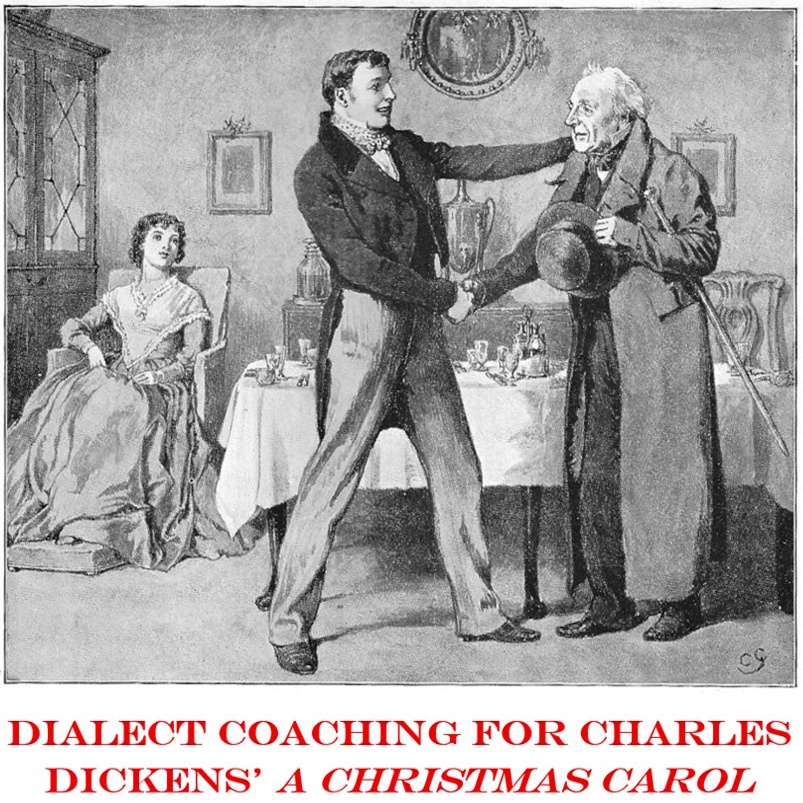Jiangsu 12
Listen to Jiangsu 12, a 19-year-old woman from Dangyan, Jiangsu Province, China. Click or tap the triangle-shaped play button to hear the subject.
Both as a courtesy and to comply with copyright law, please remember to credit IDEA for direct or indirect use of samples. IDEA is a free resource; please consider supporting us.
BIOGRAPHICAL INFORMATION
AGE: 19
DATE OF BIRTH (DD/MM/YYYY): 14/09/1990
PLACE OF BIRTH: Dangyan, Jiangsu Province
GENDER: female
ETHNICITY: Han Chinese
OCCUPATION: student
EDUCATION: At the time of the recording, the subject was in her second year at university.
AREA(S) OF RESIDENCE OUTSIDE REPRESENTATIVE REGION FOR LONGER THAN SIX MONTHS:
Subject came to live in Suzhou, Jiangsu, 18 months before the date of the recording.
OTHER INFLUENCES ON SPEECH:
The subject is an English major student and only left her hometown when she came to university less than two years ago. During her school years, her English teachers were all Chinese nationals, and they will have had a primary influence on her English speech. This will have been quite variable. At university, she will also have been influenced to some extent by the need to speak Putonghua and the attitudes and accents of her Chinese teachers there. Her exposure to native English-speaking teachers has been slight.
The text used in our recordings of scripted speech can be found by clicking here.
RECORDED BY: Bill McCann
DATE OF RECORDING (DD/MM/YYYY): 23/04/2010
PHONETIC TRANSCRIPTION OF SCRIPTED SPEECH: N/A
TRANSCRIBED BY: N/A
DATE OF TRANSCRIPTION (DD/MM/YYYY): N/A
ORTHOGRAPHIC TRANSCRIPTION OF UNSCRIPTED SPEECH:
I come from Dangyang, Jiangsu Province. It is famous for producing glasses. There are four people in my family: my grandma, my parents and me. My favorite animal is dog. I like reading and travel-travelling very much. I want to visit Jiuzhaigou because of its beautiful scenery.
TRANSCRIBED BY: Bill McCann
DATE OF TRANSCRIPTION (DD/MM/YYYY): 23/04/2010
PHONETIC TRANSCRIPTION OF UNSCRIPTED SPEECH: N/A
TRANSCRIBED BY: N/A
DATE OF TRANSCRIPTION (DD/MM/YYYY): N/A
SCHOLARLY COMMENTARY:
Short readings from the analects of Confucius
The subject now goes on to read the following abstracts from the Analects of Confucius in her own Danyanghua dialect. A reading in Putonghua (Mandarin) can be heard on the Jiangsu 7 sample.
KEY: A = Mandarin (Simplified); B = Mandarin (Pingyin); C = Dialect (Pingyin); D = English.
孔子: 论语 – Kǒng zǐ : lún yǔ – Kon zi:leng yu – Confucius: Lun Yu
學而第一 – xué ér dì yī – Xué ér dì yī – Chapter One
A: 1-1:- 子曰: 學而時習之、不亦說乎。
B: yī-yī :- zǐ yuē: xué ér shí xí zhī, bù yì yuè hū.
C: yī-yī :- zi yue, xue er shi xi zhi, bu yi yue hu.
D: 1-1:- The Master said: Is it not pleasure to learn, and practice what is learned time and again?
A: 1-2:- 有朋自遠方來、不亦樂乎。
B: yī-èr:- yǒu péng zì yuǎn fāng lái, bù yì lè hū.
C: yī-èr:- you peng zi yuan fang lai, bu yi le hu.
D: 1-2:- Is it not happiness to have friends coming from distant places?
A: 1-3:- 人不知而不慍、不亦君子乎。
B: yī-sān: rén bù zhī ér bù yùn, bù yì jūn zi hū.
C: yī-sān: ren bu zhi er bu yun, bu yi jun zi hu.
D: 1-3:- Is it not virtue for a man to feel no discomposure when others take no note of him?
為政第二 – wéi zhèng dì èr – wéi zhèng dì ér – Chapter two
A: 2-2:- 子曰:「詩三百,一言以蔽之,曰:『思無邪』。
B: èr-èr:- zǐ yuē: shī sān bǎi, yī yán yǐ bì zhī , yuē: sī wú xié.
C: èr-èr:- zi yue: shi san bai, yi yan yi bi zhi, yue:si wu xie.
D: 2-2:- The Master said: In the Book of Odes there are three hundred poems, but they may be summarized in a single sentence: Think no evil.
A: 2-7:- 子游問孝。子曰:今之孝者,是謂能養。至於犬馬,皆能有養;不敬, 何 以別乎。
B: èr-qī:- zǐ Yóu wèn xiào. zǐ yuē: jīn zhī xiào zhě, shì wèi néng yǎng. zhì wū quǎn mǎ, jiē néng yǒu yǎng; bù jìng, hé yǐ bié hū.
C: : èr-qī:- zi you wen xiao. zi yue: jin zhi xiao zhe, shi wei neng yang. zhi yu quan ma, jie neng you yang; bu jing, he yi bie hu.
D: 2-7:- Zi You asked what filial piety was. The Master said: Nowadays, providing support for one’s parents is considered filial piety. But dogs and horses can also do this. If there is no respect, what is the difference?
A: 2-10:- 子曰:「視其所以,觀其所由,察其所安。人焉叟哉?人焉叟哉?
B: èr-shí :- zǐ yuē: shì qí suǒ yǐ , guān qí suǒ yóu, chá qí suǒ ān. rén yān sǒu zāi? rén yān sǒu zāi?
C: èr-shí :- zi yue: shi qi suo yi, guan qi suo you, cha qi suo an. ren yan sou zai? ren yan sou zai?
D: 2-10:- The Master said: Watch what a man does. Find out his motives. See how he takes his ease. How then can the man hide his true self? How can the man hide his true self?
Commentary
The subject was raised Dangyan, close to the city center. Danyang is a county-level city situated on the southern bank of Yangtze. Danyang means “Scarlet Sun” in Mandarin and was named as an independent county jurisdiction in 742 A.D. during the Tang Dynasty. Two emperors, Xu Daocheng (427 – 482 A.D.), the founder emperor of the Southern Dynasty, and Xu Yan (464 – 549 A.D.), the founder of the Liang Dynasty, lived in the town before ascending the throne.
Situated on a water-rich flatland that is crisscrossed by 96 rivers and the Grand Canal, Danyang was traditionally an agricultural area. However, it is now a thriving industrial development area known as “Golden Danyang” and forms part of the “Golden Triangle” of Jiangsu Province.
Within China, Danyang has been famous for centuries as the hometown of the hero in the legend that explains the origin of the Milky Way and gave China her “Valentine’s Day” (Qi Qiao Jie). The legend is explained in theJiangsu8 sample.
This subject’s native dialect is one of the sub-dialects of Danyanghua, all of which are more or less mutually intelligible. At a higher level, Danyanghua is a member of the Northern Wu group. However, the tone sandhi patterning differs from the Suzhou, Wuxi and Shanghai dialects.
The subject’s accent is a little strong, and some noticeable characteristics, which can be heard on the recordings, occasionally include the /l/ and /r/ minimal-pair substitution, and the alteration of the /u:/ in “Duke” and “lunatic.” Otherwise, the subject appears to have eliminated most of the usual minimal-pair problems but without acquiring a noticeable Western accent.
COMMENTARY BY: Bill McCann
DATE OF COMMENTARY (DD/MM/YYYY): 23/04/2010
The archive provides:
- Recordings of accent/dialect speakers from the region you select.
- Text of the speakers’ biographical details.
- Scholarly commentary and analysis in some cases.
- In most cases, an orthographic transcription of the speakers’ unscripted speech. In a small number of cases, you will also find a narrow phonetic transcription of the sample (see Phonetic Transcriptions for a complete list). The recordings average four minutes in length and feature both the reading of one of two standard passages, and some unscripted speech. The two passages are Comma Gets a Cure (currently our standard passage) and The Rainbow Passage (used in our earliest recordings).
For instructional materials or coaching in the accents and dialects represented here, please go to Other Dialect Services.
 IDEA: International Dialects of English Archive
IDEA: International Dialects of English Archive



